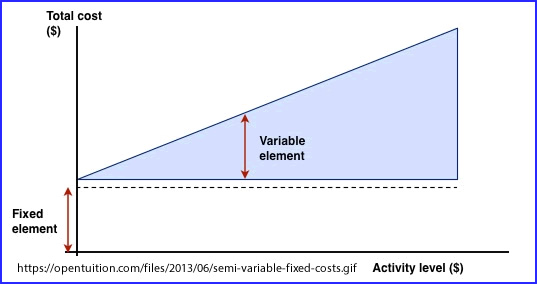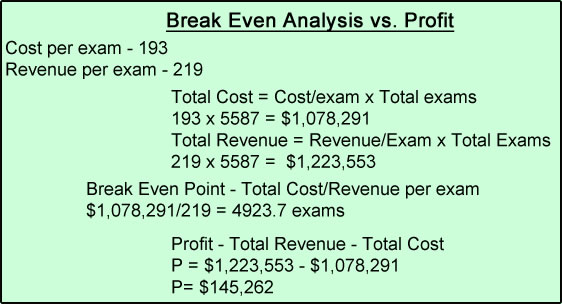- Why is a budget so important?
- Sets down fiscal guidelines for your department
- Sets forth a plan for the future and keeps the department on track for the current fiscal year
- Predicts variations in the future making the department more fiscally responsible
- As a general rule variances within your monthly expectations of greater or lesser than 5%, it must be justified
- Is Nuclear Medicine a Cost Center or a Revenue Center?
- Community hospital vs. Medical Center
- Research and grants dollars
- Operating and Capital Expenses - are they in line to make a profit. To buy capital you've got to make a "profit." Example - what is the rationale for buy you a gamma camera
- Are you replacing? Is it "end of life"
- Or adding? Do you have the procedures to back up that demand?
- Is there room for a new camera?
- Will you need to construct a new area?
- Will you need to hire extra personal?
- Lots of expenses to consider
- How are dollars reinvested into profit and non-profit corporations?
- Where does profit come from in an HCA hospital?
- Total revenue
- Total expense
- What's your profit
- How about taxes?
- Here is the split - the share holders get dividends while the hospital gets retained earnings
- Where does profit come from in at MCV?
- Technically there should be no profit
- Key difference - taxes and share holder
- Let's look at the numbers
- Where does profit come from in an HCA hospital?
- The Budget Planning Process - What should we consider
- Keeping in line with the goals and objectives of the organization
- What kind of staffing is going to be required next year?
- What will your service agreements and/or repair costs be?
- Sticking with the "Mother Company"
- Or go with a third party service
- Pitting them against one another - is this ethical?
- Consider your radiopharmaceutical budget
- It the market competitive? If there is only one radiopharmacy in town you are going to pay more!
- Do you have a choice to switch? Depends on how strong your "buying group is."
- Group Purchasing Organizations = buying group
- What do these group purchasing organization control when you want to purchase supplies and capital equipment?
- VCU Health uses Premier
- So you have to buy a Siemens camera, but you want GE. How can you justify it?
- Are there any new procedures or other capital equipment that will generate revenue (your goal is to make a profit)
- Will there be any older procedures that longer generating expected income or reduced income? Does the service still need to be provided?
- What about staffing?
- What is the current outlook?
- Is someone pregnant?
- Anyone going on extended leave?
- Someone retiring?
- What was the amount of overtime last year? (rule of thumb - 50%)
- Is there a formula the justifies a new hire?
- What is the wait time for an outpatient to schedule a procedure?
- Current work hours - should they be extended? Is adding a second shift justified?
- How does MCV's handle its employee scheduling
- Key - You must look into the future and expect the un/excepted
- Focus on your internal needs and the environment outside the hospital
- Consider the Marketing Mix
- Predicting the future costs
- Salaries and overtime - will they go up (Ha - you bet ya)
- General supplies
- Service agreements
- Radiopharmaceuticals
- Others Cost factors
- In an overall picture one must classified costs as either fixed cost or variable
- Looking at cost
- Variable expenses - are those expenses that vary with a level of productivity
- General statement - The more business you have, the more costs you'll generate
- Buying radiopharmaceuticals to overtime to hiring a new employee
- General supplies?
- Supplies
- What is the total cost?
- Do you expect prices to go up/down?
- Will there be an increase in any your supplies. This would usually be related to the type of procedures being done in the department
- Salaries
- How many FTEs? Part-time? Per Diem?
- What is the expected increase or decrease in work hours?
- Remember to add you benefits - I bet the insurance plan went up
- Maintenance costs and service contracts
- Continuing education (if you are lucky you'll get funded in this category)
- Fixed cost - are expenses generated whether the department is open or not
- Electric and gas
- Upper management
- Advertising (Some hospitals don't have this expense)
- How does a hospital bill for their fixed cost? It boils down to how big your department is. Apply cost per square foot.
- Start looking at revenue
- How much money did the department generate last year
- It's based on volume of procedures and determining the average revenue per exam
- Consider historical prospective
- What was last years predicted budget - where there any variance(s) to the budget?
- If you were off from last year's prediction, ask why? Change it!
- What kind of pattern do you expect next year - calculate it!
- When do you make money?
- Profit = Total Revenue - Total Cost. See example below
- [Brackets indicate negative profit]
- Comparison is the name of the game - determine trends over the years
- Compare the amount of procedures
- Compare the amount of supplies used
- Compare the amount of FTEs - Hours - Overtime
- Did you make a profit? Break even? Or lose [$$]?
- Additional look at salaries
- Divide total FTE to into the amount of procedures completed last year. This gives you the amount of procedures completed per technologist - Hospitals looks at this to determine how effiecent you are
- If you expect the amount of procedures to increase then you can determine the predicted cost in salaries. Remember to include salary increases for the up and coming year
- As the example assume your department will completed 10,000 procedures last year with a total of 5 FTEs.
- This means that each technologist completed 2000 procedures
- If the manager expects a growth of 1000 procedures (example - do to new equipment purchase) then it will require a total of 5.5 employees to complete this task
- Your options are to either hiring 0.5 FTE or factor the 0.5 FTE at an overtime rate
- Determine the mean salary per technologist. This is helpful in determining if a new hire is required or if you just want your technologists do the the overtime
- Apply this approach and look over the last few years
- Look at the amount of overtime (OT) hours and determine the OT/FTE ratio
- Has this gone up?
- Is there a trend?
- Can you justify the hiring of an additional employee?
- Then apply your benefits
- Break Even Analysis
- The goal of any non-profit hospital is to break even for the year (which doesn't always happen)
- To determine the amount consider the following
- How many procedures did the technologists complete last = 5587
- The average cost of each procedure is $219
- The total cost per procedure is $193
- Total procedures completed = 5587
- What is the break even point?
- How much of a profit did the department make?
Our goal (your goal) today is to determine the cost and revenues for the following year's budget. Let us first look at what makes up an operation and supply budget



Return to the Table of Content